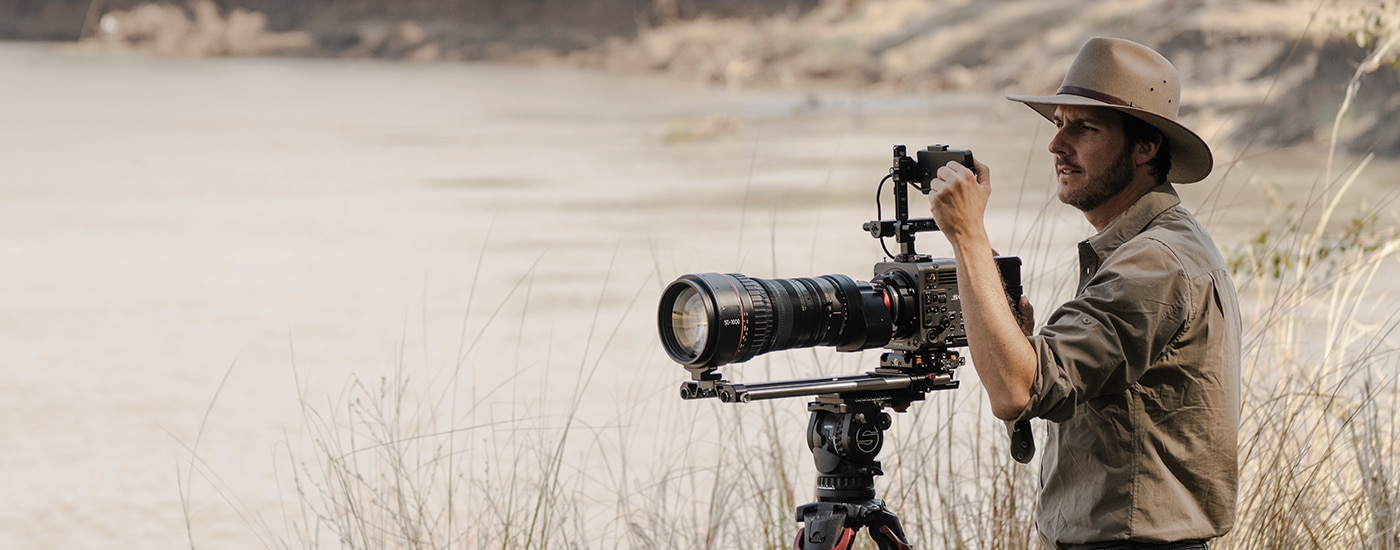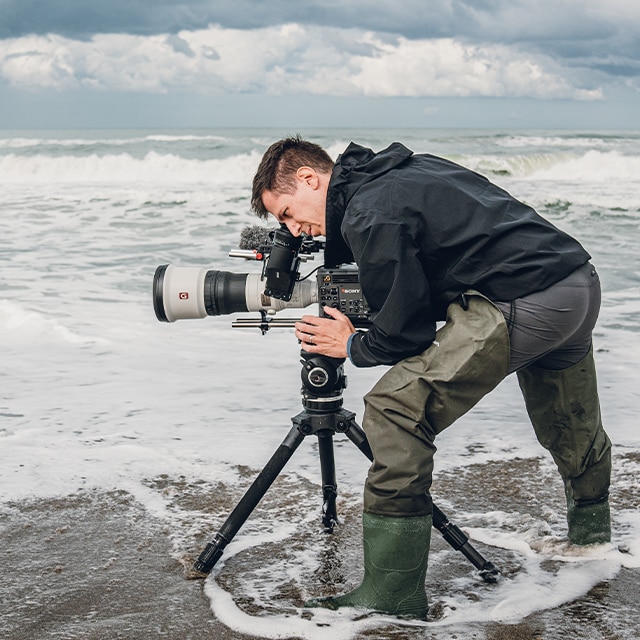
A Day To Remember with BURANO
Introduction
Based in Switzerland, Chris Schmid is a highly regarded Director of Photography that specialises in big cat and wildlife film making. He is a National Geographic Explorer and a Sony Ambassador.
Chris recently used Sony’s BURANO digital cinema camera to shoot this short film A Day To Remember. The film was shot in the South Luangwa and lower Zambezi national parks in Zambia and follows a woman, Melanie, who dreams of a day filled with many different animals.
And tells the story of a woman called Melanie and her dreams of a day filled with many different animals.
Compact camera, small crew
For a wildlife film Chris prefers to work with a small nimble crew. For this film it was just Chris, a guide and Melanie. So having a compact and easily transportable camera was important.
He found the cubic shape of the camera body to be very handy, especially when rigging the camera on the lightweight DJI RS3 gimbal.
On the RS3 he used Sony’s E-Mount 24-70mm GM MkII lens. To control the focus, he mounted the camera’s included LCD screen to the top of the gimbal and used the touch screen and touch tracking functions to keep his subject in crisp focus. There is one scene in the film in where the camera tracks through some trees and there are Zebras walking in the distance, thanks to the AI based object tracking the cameras AF stayed perfectly locked on to the Zebras despite the trees passing through the foreground.
Cine Zoom
For most of the rest of the filming Chris used PL mount lenses including some very large telephoto zooms such as a 50-1000mm Cine Zoom.
“The variable ND filter is crazy good,” Chris explains. “The 50-1000 (lens), you know when you zoom the aperture changes and with 1 button you can switch in the ND filter to compensate, it’s so useful to me.”
Chris found the built in variable ND filter to be of great benefit, particularly when shooting challenging back lit shots. It allowed him to quickly add or remove just the right amount of ND for the right balance between the dark foreground and bright background.
Not only does BURANO have Sony’s variable ND filter system but it also has IBIS in body stabilisation, this is a first for a digital cinema camera. When using IBIS with his PL mount lenses Chris was able to enter the focal length of the lens into the camera so that the IBIS system would provide the correct amount of stabilisation for that lens.
But what about the image quality?
“When you look at the footage the dynamic range is very nice,” Chris says. “You can recover the details from the shade of the trees while keeping the highlights, it’s not burnt and it’s amazing how the forest comes to life.”
Chris says that shooting in a forest is typically very difficult because of the extreme contrast due to the brilliant light coming through the trees and the deep shadows beneath them. Often he feels that it never looks the same as what you see with your own eyes. But he felt that BURANO rendered the forest scenes exceptionally well capturing the beautiful quality of the Zambian light and the subtle textures of often dark coloured animals such as elephants.
The variable ND filter is crazy good, the 50-1000 (lens), you know when you zoom the aperture changes and with one button you can switch in the ND filter to compensate, it’s so useful to me.
Production Details
The film was shot using the 16 bit X-OCN LT codec. Chris used all the camera’s scan modes including full-frame 8.6K, down sampled Full Frame Crop 6K mode, 5.8K Super 35. And when shooting at 120 frames per second, the Super 35mm 4K crop mode. The different scan sizes gave him great flexibility.
When using lenses designed for Super 35mm with 2x telephoto converters, he could use the full-frame scan modes, or he could remove the 2x extender and shoot at 5.8K Super 35. To make it easy to almost switch between any of the different crop modes instantly, he assigned the crop function to one of the camera’s assignable buttons. Chris did most of the post production himself and found the X-OCN LT footage very easy to work with.
When you look at the footage the dynamic range is very nice, you can recover the details from the shade of the trees while keeping the highlights, it’s not burnt and it’s amazing how the forest comes to life.
Never Miss The Action
BURANO shoots onto readily available CFExpress cards. Having two card slots instead of just one proved to be a great upgrade compared to some of the other cameras Chris uses. Sometimes you need to shoot for long periods and, when there is only one slot you have to stop recording while you change cards, and of course with wildlife this will be the moment that there is some amazing animal behaviour. But with BURANO’s two slots, the camera just switches to the other slot and carries on.
Another invaluable feature for wildlife is the camera’s cache record function. Cache record allows you to capture unexpected events that happen while you are not recording. Rather than just recording for long periods in the hope of capturing the behaviour of the animal, Chris was able to use the camera’s cache record function to capture difficult to predict behaviours.
Finally, Chris recommends you watch out for the moonlight shots of Melanie. He says the camera’s low light performance is incredible, BURANO has two base ISOs – 800 and 3200 – and both have the same dynamic range and the same exceptional colour performance. By using the camera’s upper base ISO of 3200 he was able to shoot at night with nothing other than firelight or moonlight.





